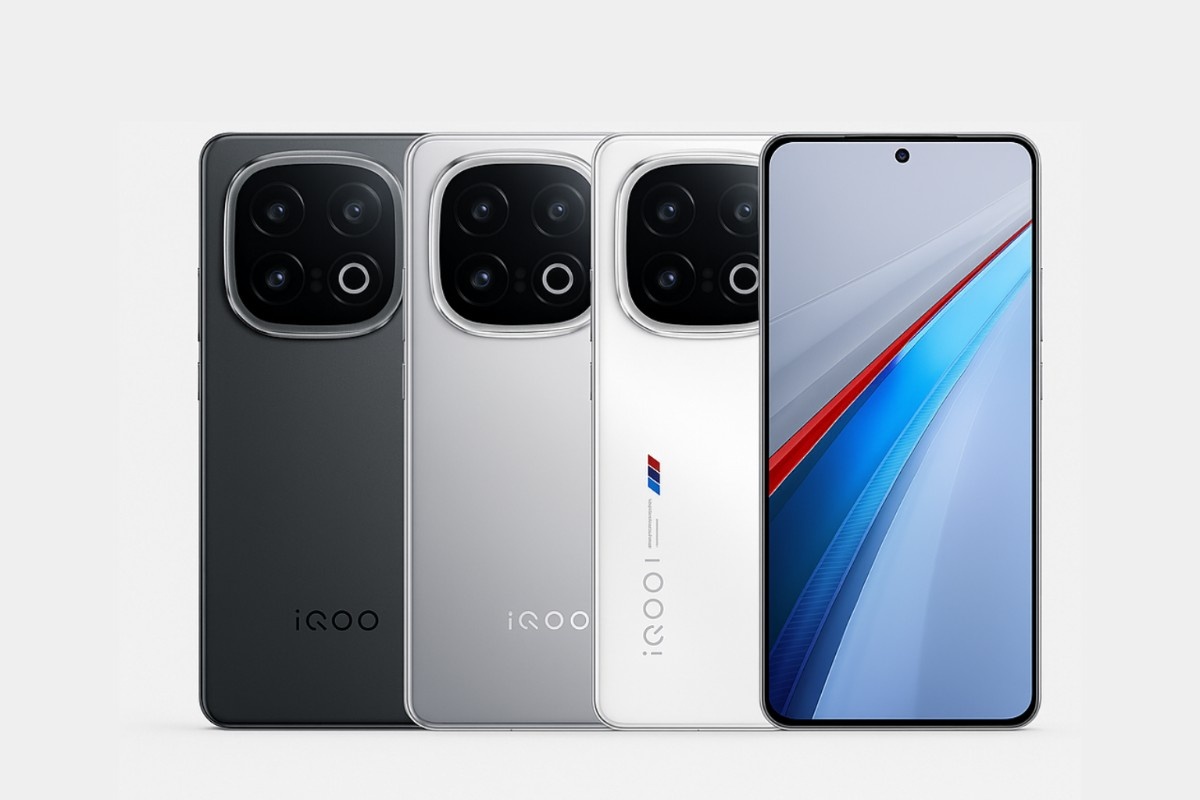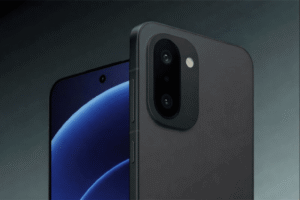The iQOO 15 arrives as a late-2025 contender that aims to shift the balance toward raw performance and endurance. It pairs a massive 7,000mAh battery with Qualcomm’s Snapdragon 8 Elite Gen 5, a 144Hz 2K+ LTPO AMOLED and a versatile triple 50MP camera setup. The result is a phone targeted at gamers, creators and power users who want flagship speed and multi-day stamina without paying ultra-premium prices.
iQOO 15 Specifications and Features
- Performance & Display: Snapdragon 8 Elite Gen 5 (3 nm) chipset with Adreno 840 GPU, up to 16 GB LPDDR5X RAM and 1 TB UFS 4.1 storage. Features a 6.85-inch LTPO AMOLED QHD+ display (144 Hz refresh rate, up to 6,000 nits peak brightness).
- Cameras & Imaging: Triple 50 MP rear setup — main, ultra-wide, and periscope telephoto (3× optical zoom, up to 100× digital). 32 MP front camera for selfies and video calls.
- Battery & Charging: 7,000 mAh battery with 100 W wired fast charging and 40 W wireless charging support. Includes IP68/IP69 rating for dust and water resistance.
iQOO 15 Design, Performance, and Battery Life Explained
The build is straightforward and functional rather than fashion-first. iQOO uses glass and metal, a prominent camera island and an “Energy Halo” RGB ring that doubles as a notification and game alert light.
Despite the large battery cell the chassis remains reasonably slim and comfortable to hold; you also get an ultrasonic in-display fingerprint scanner and IP dust/water resistance. The 6.85-inch LTPO AMOLED provides sharp 2K+ resolution, HDR support and adaptive 144Hz refresh to keep animations and gameplay buttery smooth while conserving power when high refresh isn’t needed.
Performance is the headline feature. With the Snapdragon 8 Elite Gen 5 at its core and up to 16GB of LPDDR5X RAM, the iQOO 15 delivers consistently fast app launches, fluid multitasking and sustained frame rates in demanding 3D titles.
Thermal management a sizable vapor chamber and tuned heat pipes plus a small dedicated gaming co-processor mean the phone can maintain performance over long sessions without dramatic throttling. That real-world consistency is what defines the device’s Snapdragon 8 Elite performance: it’s not only about peak benchmark scores but about keeping the experience smooth under load.
Battery life is where the iQOO 15 genuinely stands out. The 7,000mAh pack translates into noticeably longer uptime than most recent flagships: heavy users running prolonged gaming, video streaming and navigation should comfortably finish a full day, and many moderate users will reach a second day between charges.
iQOO complements capacity with practical charging: fast wired FlashCharge to restore large amounts of power quickly, wireless charging for convenience and reverse wireless for topping up accessories. Put simply, iQOO 15 battery life solves “battery anxiety” for a broad range of users.
iQOO 15 Camera and Software Overview
Cameras have been upgraded beyond what you typically see in performance-focused phones. The triple 50MP array a large-sensor main with OIS, a 50MP ultra-wide and a 50MP telephoto with optical zoom covers wide, ultra-wide and zoom needs with consistent colour tuning.
Daylight photos are detailed with good dynamic range and the telephoto produces usable optical zoom shots without excessive digital cropping. Low-light performance and computational photography aren’t quite at the level of the very best camera flagships, but the iQOO 15’s system is versatile and frequently outperforms other gaming-oriented models when it comes to real-world shooting.
Software comes in the form of OriginOS 6 atop Android 16. The skin is polished and heavy on customization, with gaming-centred tools such as performance modes, a game sidebar and enhanced haptics.
It is denser than stock Android and may feel opinionated to users who prefer a minimalist experience, but it rewards those who want granular control over performance and visual style.
iQOO 15 vs Rivals: Can the Battery Beast Outshine OnePlus 13 and Redmi K70?
When comparing the iQOO 15 with the OnePlus 13 and Redmi K70, it’s clear each brand is chasing a different kind of flagship experience. The iQOO 15 takes the performance route, combining Qualcomm’s latest Snapdragon 8 Elite Gen 5 processor with a massive 7,000 mAh battery the largest in its class. This setup gives it a clear edge in gaming and endurance, easily outlasting the OnePlus 13’s 6,000 mAh and Redmi K70’s 5,000 mAh units. For users who demand long screen time and sustained power, the iQOO 15 delivers unmatched reliability.
The OnePlus 13 focuses more on refinement than raw power. It shares similar flagship hardware but offers a cleaner, smoother experience through OxygenOS and Hasselblad-tuned cameras that capture more natural tones. It may not last as long as the iQOO 15, but it feels more polished in everyday use and appeals to users who value design and camera performance as much as speed.
When comparing the iQOO 15 with the OnePlus 13 and Redmi K70, it’s clear each brand is chasing a different kind of flagship experience. The iQOO 15 takes the performance route, combining Qualcomm’s latest Snapdragon 8 Elite Gen 5 processor with a massive 7,000 mAh battery the largest in its class. This setup gives it a clear edge in gaming and endurance, easily outlasting the OnePlus 13’s 6,000 mAh and Redmi K70’s 5,000 mAh units. For users who demand long screen time and sustained power, the iQOO 15 delivers unmatched reliability.
The OnePlus 13 focuses more on refinement than raw power. It shares similar flagship hardware but offers a cleaner, smoother experience through OxygenOS and Hasselblad-tuned cameras that capture more natural tones. It may not last as long as the iQOO 15, but it feels more polished in everyday use and appeals to users who value design and camera performance as much as speed.
Meanwhile, the Redmi K70 plays the value card. It offers capable Snapdragon 8 Gen 2 performance, a solid 120 Hz display, and premium build quality at a much lower price. However, its smaller battery and less advanced camera setup keep it a tier below the other two.
In essence, the iQOO 15 is built for gamers and power users, the OnePlus 13 caters to balanced flagship seekers, and the Redmi K70 remains the budget-friendly option that still delivers impressive flagship-like performance.







